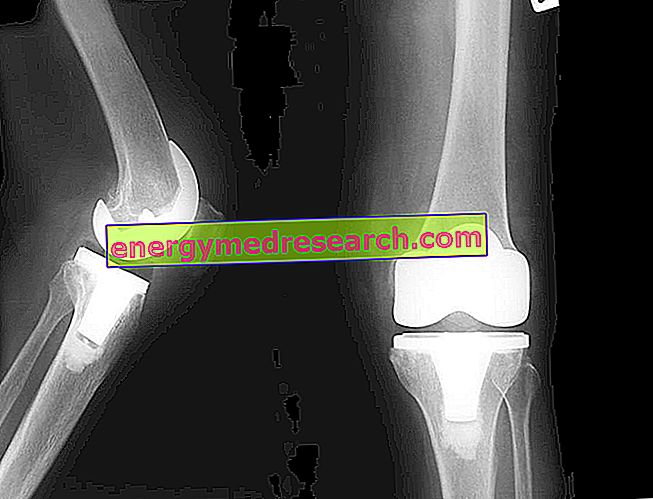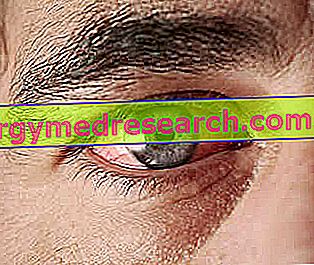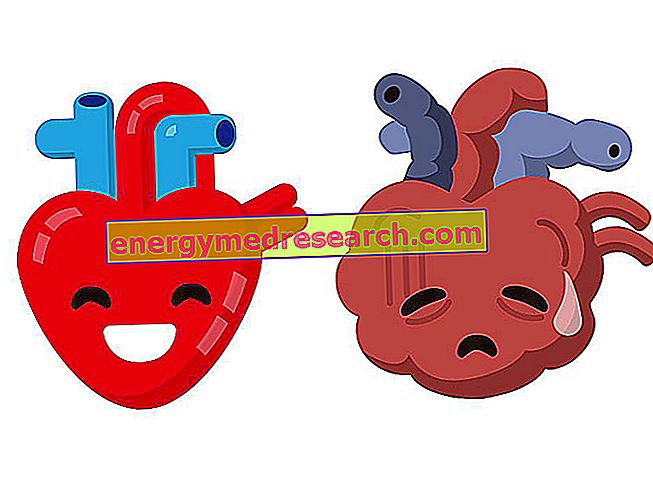Generality
Egg donation (or egg donation ) is a process in which a female individual spontaneously donates part of her eggs so that they can be used with heterologous fertilization by a couple with fertility problems .

The donor who decides to donate her eggs to other women at an assisted reproduction clinic must undergo specific examinations, such as, for example, medical history and analyzes for infectious and genetic diseases.
Short introduction: requirements for heterologous fertilization
Heterologous fertilization is a medically assisted procreation (PMA) technique that helps couples who want a child but cannot spontaneously undertake a pregnancy.
- In heterologous fertilization, one of the two gametes used for procreative purposes (female oocyte or male spermatozoa) does not belong to one of the parents who undergoes treatment, but comes from a subject outside the requesting (donor) couple .
In Italy, recourse to this technique is legitimate (as indicated by the Constitutional Court ruling 162/2014) as part of a course of treatment, in cases in which the sterility or absolute infertility of at least one of the two parents is ascertained and there are no other effective therapeutic methods to resolve this condition. However, heterologous fertilization is allowed only for couples of different sex, married or living together in a stable manner. Therefore, neither single persons nor couples of the same sex will be allowed to donate.
Egg donation: what is it?
Egg donation is a process that involves the insemination of the oocyte coming from a specially stimulated donor, and the transfer of the embryo thus obtained into the uterus of the receiving woman.
To whom it is addressed
In conditions of proven sterility, women may resort to egg donation if they present:
- Old age;
- Insufficiency or poor early or congenital ovarian reserve;
- Diseases that have compromised reproductive capacity;
- Chromosomal or genetic abnormalities;
- multiple abortions;
- Repeated failures of other medically assisted procreation techniques.
Egg donation in Italy
In Italy, the realization of heterologous fertilization has found some obstacles, among which the lack of donors stands out which makes it impossible to satisfy all the requests. In our country, in fact, donations take place on a voluntary basis and are free (there are no forms of financial compensation).
This aspect is established to avoid the trade in oocytes and semen which, besides being excluded from the judgment 162/2014 of the Constitutional Court, is also prohibited throughout Europe. For an egg donation, it is necessary, therefore, to find who, under such conditions, can accept to undergo hormonal treatment and enter the operating room to help another woman to have a child. For this reason, finding gametes, especially female ones, is very difficult.
To overcome the obstacle represented by the few donations, Italian hospitals and centers specialized in heterologous fertilization can find oocytes through two options:
- Egg sharing : a patient undergoing homologous fertilization (in which the eggs are her and the partner's spermatozoa) may decide to donate the extra eggs to another woman.
- Acquisition of ova from foreign banks : the PMA centers enter into agreements with foreign banks to find semen or cryopreserved oocytes (note: it is possible to acquire gametes from suppliers, but not to buy or sell them, since their market is prohibited by law).
In any case, rigorous controls are in place, to ensure that donors do not have infectious diseases or chromosomal abnormalities. Furthermore, the foreign supplying banks must guarantee the traceability of biological samples and transport safety conditions.
Requirements of the donor
To access heterologous fertilization, it is possible to resort to oocytes frozen in the centers themselves, or donated by women in turn subjected to assisted fertilization.
The donation of oocytes can be carried out in the presence of the following requirements :
- The woman who donates her eggs must be aged between 20 and 35;
- The donor must be in perfect health, physical and mental;
- The ovulatory function of the donor must be normal;
- Each donor has a maximum limit of ten born with their own gametes;
- Who donates the oocytes must not have malformations, genetic or congenital diseases, or hereditary ones (not even the closest relatives can have them; for this reason, the donor cannot have been adopted, since it is essential to know the medical history);
In addition to the previous requirements, potential egg donors will have to pass two indispensable tests: on the one hand blood tests and, on the other hand, a gynecological exam to evaluate fertility.
Selection of the donor
- Egg donors are healthy women, young (20-35 years) and with proven fertility. These criteria are necessary to ensure optimal recovery of oocytes in terms of number and quality.
- Egg donation must take place anonymously and voluntarily.
- In the selection process, the donor's family and personal clinical history, gynecological health status, psychological and attitudinal conditions, and professional status are evaluated, as well as specific tests to exclude infectious or hereditary diseases.
- For pairing, the guidelines for heterologous fertilization recommend that the donor's immunological (blood group) and phenotypic characteristics - for example, skin color - be compatible with those of future parents, so the clinic must guarantee certain criteria, like respect for ethnicity and blood type. This favors the natural process of family integration.
How is it done?
Stimulation of donor ovarian activity
Once the most suitable donor is selected, it is subjected to a controlled ovarian stimulation, through the administration of hormones. The purpose is to induce the maturation of several follicles to withdraw, if possible, more oocytes, before natural ovulation occurs (in order to collect the egg cells it is first necessary to localize them).
The donor is then subjected to periodic ultrasound scans and hormonal doses to monitor the evolution of the process and establish the moment in which to collect the eggs by follicular puncture (surgery to extract the woman's eggs from within the mature antral follicles).
Oocyte recovery
When the follicles reach a diameter of approximately 16-18 mm, the oocyte retrieval ( follicular puncture or pick-up ) is scheduled, then the hCG hormone is administered to induce ovulation between 36 and 48 hours later.
The recovery of oocytes is carried out by means of an ultrasound-guided transvaginal puncture (therefore from the vagina of the donor). This procedure is performed following the administration of mild, generally local anesthesia and sedation. The surgery is performed by a gynecologist, an embryologist and an anesthesiologist, and lasts about 20 minutes.
The gynecologist opens the cervical canal with the help of the speculum and introduces the ultrasound along with the aspiration needle. With the support of transvaginal ultrasound, the doctor then locates the follicles and the puncture of these is carried out one by one, collecting the liquid they contain, inside which the oocyte is present.
Always maintaining a temperature of 37 ° C, the collected material is transferred to the laboratory, where the embryological specialists recover and select the mature oocytes, and prepare them for use.
Endometrial preparation of the recipient
The oocytes thus obtained will be freshly seeded or cryopreserved and used at the appropriate times. In fact, before artificial insemination, the endometrium of the recipient woman must have an optimal receptivity for the embryo implantation.
Recommendations
Before the egg retrieval, it is essential that the donor respects the absolute fast during the 6 hours preceding the operation. This precaution is necessary so that the pick-up takes place normally and does not involve secondary effects or unexpected complications.
The patient is admitted to the clinic on the same day as the induced ovulation, one hour before surgery.
Risks and possible complications
- Egg donation is a painless process, carried out under sedation. The woman can leave the center shortly after the follicular puncture; however, it is recommended to wait about an hour to fully recover from the local anesthesia, and to go to the accompanied clinic.
- After sampling, abdominal pain can occur similar to menstrual pain or mild vaginal bleeding. To recover from the egg donation, it would be better to stay at rest for at least a day and not to undergo great efforts.
- The response to drugs to induce ovulation must be controlled (with ultrasound scans of the ovaries and / or hormonal dosages) in order to be able to stop the treatment in time, if ovarian hyperstimulation syndrome is needed, that is the development of an excessive number of follicles . This condition can lead to various symptoms, such as increased ovarian volume, abdominal pain, weight gain, shortness of breath and nausea; in the most serious cases, abdominal distention and the formation of blood clots can occur which could make hospitalization necessary.
- Egg donation does not compromise the donor's future fertility. Usually, a period of 2 months is indicated between each intervention.



